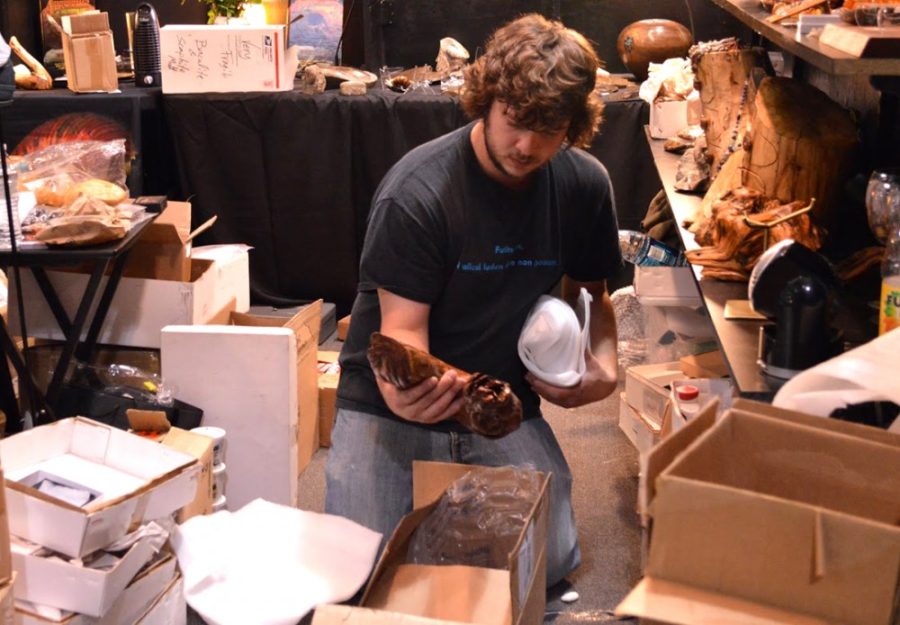At the Tucson Convention Center this past weekend, the Tucson Gem and Mineral Society held its 61st annual show as part of the Tucson Gem and Mineral Show. It brought vendors and educators alike to showcase their gems, minerals and fossils and allowed visitors to explore the science behind the gem with educators from the UA, the TGMS, Arizona-Sonora Desert Museum and many more organizations and dealers.
“The Gem Show highlights some of the most spectacular, rare minerals that come out of the Earth, [which makes it] a great place for people to get interested in natural resources,” said Simone Runyon, a geosciences graduate student interested in economic geology. “[It] is a great opportunity for education [about] … the mines that supply the natural resources that we rely on in our day-to-day lives, not just the glittering specimens.”
The Gemological Institute of America booth, for example, taught visitors about inclusions, which is another mineral, gas bubble or organic material inside a gem. Individuals could look at amber under a microscope to see a dipteran insect — the order containing flies and mosquitoes — as well as other minerals to view more examples. Amber is fossilized tree resin that is at least 1 million years old, explained Larne Antrim, guest services manager of the GIA.
The Gemmological Association of Great Britain, similar to the GIA, showcased the various tools a gemologist would use to inspect their findings.
“We have had demonstrations [teaching about] different gemological equipment, [such as] microscopes, dichroscopes and polariscopes,” said Gary Roskin, a fellow and practical tutor of the GAGB.
The show not only displayed beautiful gems and their tools, but educators also emphasized some of the more common rocks and minerals people see everyday. Jane Dianich, a science educator volunteering with the Denver U.S. Geological Survey office, taught people about some of the most common minerals on earth: quartz, feldspar and mica. People at Dianich’s booth were given the opportunity to identify different specimens.
“We are here to help people understand and appreciate rocks and minerals,” she said. “People have a thirst for knowledge; they want to know what they have, and they are curious about the specimens we have.”
The big beautiful crystal specimens that are worth, at least, hundreds of dollars are fun to look at, but there is more information to be learned about other common rocks and minerals, as well as earth processes, Dianich said.
“People are often shocked that many of the beautiful crystals they see at the [shows] came out of the ground looking the way they do,” said Shaunna Morrison, a geosciences graduate student studying mineralogy and crystallography. “They associate nice crystal faces and angles with cut gemstones used in jewelry, but there is a multitude of raw minerals that look more dazzling than any man-cut stone.”
The Tucson Gem and Mineral Show provided a venue for people to experience the science behind gems — whether they wanted beautiful minerals or fossils, to purchase jewelry or to become more educated on minerals. There is something for everyone, Morrison said.
_______________
Follow John McMullen on Twitter.









